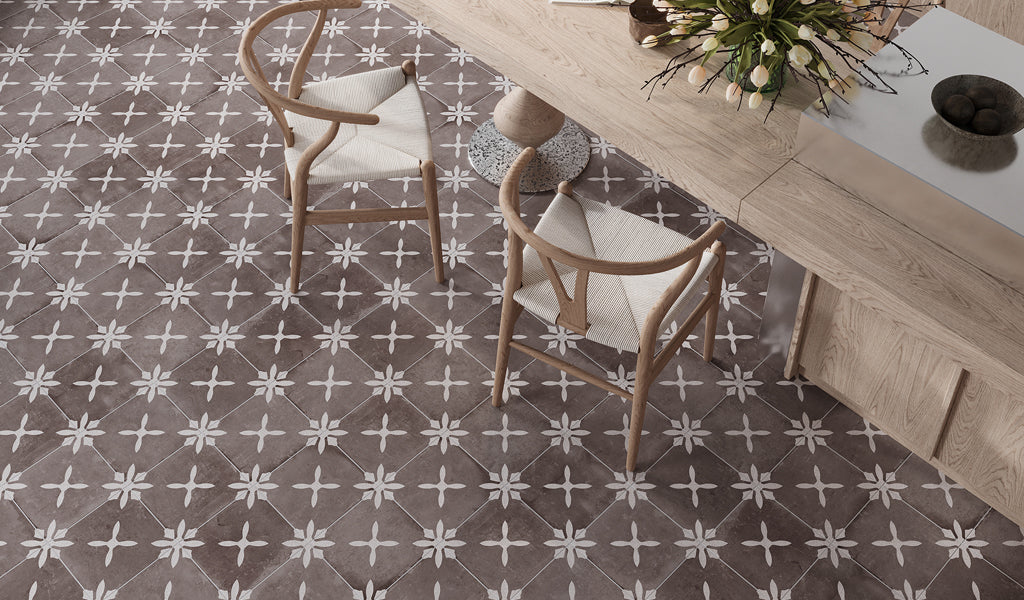How to Remove a Tile Floor: A Complete Step-by-Step Guide
Dec 23, 2024Tile removal can be done successfully with the right tools and techniques, even though it may seem like an appalling task. Whether you’re looking into transforming your place or sorting out a structural issue, learning how to remove tile floor efficiently will save you money and time.
There are many reasons to remove a tile floor. Perhaps your tiles are chipped, cracked, or loose; this qualifies as damage and you would need to remedy the situation. Or maybe you want to replace old tiling with a new design. A new patio or shower floor tile calls for a renovation! If that’s the case, we have a myriad of styles to match your unique taste. Explore our varied collections, from gorgeous marble to rustic hardwood tile!
Let’s take you through a step by step tile floor removal process, to make your installation aesthetically pleasing and a successful task. You can also check out our Guide to Cutting Ceramic Tile!
Preparing for Floor Tile Removal

Preparation is an essential step for a successful tile removal, be it porcelain or ceramic tile. Assess the area and remove any furniture, appliances, and rugs from the room. Cover interior doorways and vents for dust containment, and open the windows to enable dust to swiftly exit. Turn off any utilities that may be affected when removing tile floor to avoid wastage in case of any mishaps. Place your tools and materials closeby, and most importantly, plan each step before you begin.
You’ll need protective clothing to keep you safe, like work boots, safety goggles, heavy-duty gloves, a dust mask, and knee pads. Have the right tile removal tools (hammer, chisel, utility knife, floor scraper) to get the job done effectively without much struggle.
Use a plastic sheeting, painter’s tape, and a vacuum to reduce the spread of dust. Avail buckets, heavy-duty plastic bags, and a dumpster as equipment and materials for tile removal.
Safety First: Preparing Your Work Area for a Safe Tile Removal

Tile removal results in sharp and dust waste, which can give rise to an environmental and health risk. For containing dust, seal off all areas with plastic sheeting and tape. Put on your safety clothing and reduce dust build-up by allowing sufficient airflow in and out of the room.
Best Way to Remove Tile Floor: A Step-by-Step Guide
In this section, we will take you through the best way to remove tile floor without causing defects to your subfloor:
Step 1: Detach any cabinets, toilets, or sinks, if they are obstructing the tile removal. For efficient work, use a crowbar to carefully remove the baseboard tile trim.
Step 2: Break a tile at the corner of the room using a hammer or chisel. Doing this will make way to use your crowbar to easily remove tiles. If there are any broken tiles already, you can start by using a crowbar for removal.
Step 3: Scrape out grout between the joints using a grout saw or utility knife so it’s easier to lift and remove the tile.
Step 4: Incase of stubborn residue, use a chemical adhesive remover to apply on the adhesive then use a scraper to lift it off.
Handling the Subfloor After Removing Tile Floor
After tile floor removal, inspect the surface to ensure there is no adhesive residue. This is for subfloor preparation, and the steps are as follows:
- Thoroughly clean the space to remove any dust and debris.
- Inspect for any damages or defects on the subfloor after removing the tile floor.
- Upon inspecting and finding cracks and holes, patch these with an all-purpose filler.
- Applying a self-leveling concrete also works great to smoothen the floor.
- Once all is done, apply primer to have a smooth and enhanced finished look.
Transitioning to New Flooring After Tile Removal

Since we’ve talked about how to remove tile floor and prepare the subfloor, it’s time to transition to new flooring. This transition allows you to refresh your space and tailor it to your style needs. Based on the floor material you’ve chosen, be it glass, travertine, or marble tile, these simple steps will allow you to achieve a professional installation.
Apply thin-set mortar before laying the new tiles. Always apply in sections to prevent the mortar from drying up before all tiles have been installed. After the mortar has dried, fill the gaps with grout, wipe out any excess with a damp sponge, and let it dry out completely. Seal the grout and tiles that are prone to moisture damage as leaving them unsealed can cause mold and stains.
Conclusion
Removing tile floor that is damaged or old might be a taxing task to do. However, the end results will leave you feeling like the sweat was all worth it! This guide provides you with a detailed outline of what tile floor removal entails, from the preparation stage, safety measures, to the last stage of having the task done. With proper planning and tools, your space can be anything you envision it to be!
Frequently Asked Questions:
1. Can I remove tile flooring myself or should I hire a professional?
Yes, you can remove tile flooring yourself if you use the right tools. For larger and complicated areas, look into hiring a professional.
2. How long does floor tile removal take?
The size of the area, how complex the project is, and the installation method determine the time spent on removing tile floor, However it should take at least a day or two
3. Are there any health risks associated with floor tile removal?
Yes, tile floor removal can cause respiratory problems as there is a lot of dust. Focus more on proper ventilation and wearing a mask.
4. What is the fastest way to remove floor tiles?
The fastest method to remove floor tiles is by using a rotary hammer with a tile removal attachment.
5. Can you remove the tile floor without removing the cabinets?
Yes, you can, even though this will be a more time-consuming and exhausting task as you have to be extremely careful when working around the edges to avoid damage.
6. How to remove tiles without damaging plasterboards?
Scrape the grout with a utility knife with minimal force. Lift the tile gently with a chisel to avoid damaging plasterboards.
7. How do you soften grout for easy tile removal?
Apply grout softening solution or warm water to the grout lines and let it sit for about 10-15 minutes before attempting to scrape it out.
8. Can you polish the concrete subfloor after removing the tiles?
After removing tile floor, a primer layer can be used on a concrete subfloor to provide a new work surface for your next installation.
9. What is the average cost to remove a tile floor?
The cost to remove tile floor ranges between $2 - $5 per square foot, on average.











